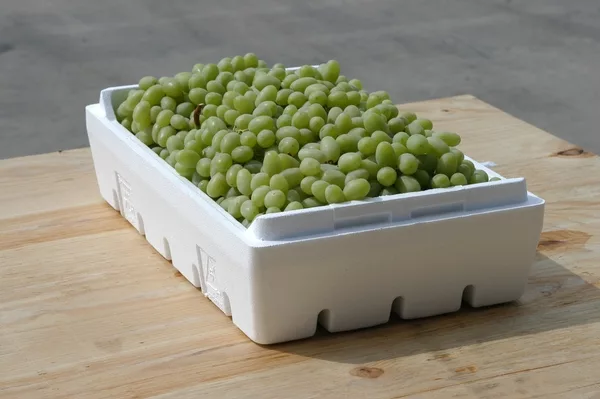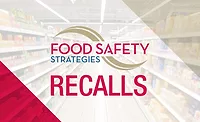Sustainability Isn’t Simple for #6

Sustainability isn’t always simple. For American consumers, the choice to recycle generally comes down to a willingness to sort designated materials from trash and help get them off to a material recovery facility by placing them in a curbside bin. On the commercial level, the potentially significant volume of recyclable materials obviously requires some cost analysis, but responsible businesses of all purposes and sizes are actively recycling whatever they can. For most recyclable materials, plastic codes molded or printed on the product are all one needs to know if it can be recycled based on what is accepted at the local material recovery facility. Yet, there is one code, #6, that still isn’t quite so simple. From a variety of perspectives, finding ways to improve the reusability performance of this important sustainable material is critical.
Polystyrene, #6, is a synthetic aromatic polymer made from styrene, which is one of the most widely used plastics and can be found in everything—compact disc cases, toys, simple household goods, protective packaging, beverage coolers and rigid commercial insulation. The wide range of products certainly doesn’t help reduce confusion about which products can be recycled. The look, feel and weight of #6 plastics is so different that even with the number imprinted on them, it’s hard to recognize a foam cooler and a cd case as being made from the same material. Perhaps the most unique and versatile of all the forms of #6 is expanded polystyrene (EPS), commonly referred to as Styrofoam™, which is actually a trademarked brand of extruded polystyrene made by Dow Chemical. EPS is a rigid, closed-cell foam that makes an ideal protective packaging for many types of fresh fruit, produce, seafood, eggs and meat because of its dual ability to cushion delicate contents and maintain desired thermal temperatures during transport and cold storage.
“In the 1970s, a group of California table grape growers was looking for a better packaging product to get their grapes to market and EPS was the answer,” says Richard Lindenmuth, interim CEO of Styrotek, a Delano, CA, company that makes EPS grape box packaging. “Grapes stop ripening the second they are taken off the vine, and a lot of evidence proves that keeping them cool from the moment they are picked greatly enhances their freshness and appeal in the grocery store.”
Lindenmuth is right. A 2001 study published in California Agriculture illustrated that the use of cluster bags and EPS boxes reduced grape cluster water loss during harvesting operations and contributed significantly to fresher grapes and prolonged product storage times compared to both corrugated cardboard boxes and Technical Kraft Veneer boxes. Combining impact shielding, moisture loss prevention and effective thermal insulation to maintain ideal transport temperatures and prevent bacteria growth, light-weight EPS foam boxes are the best way to maintain the grape’s juiciness throughout the distribution cycle.
Getting a better product to market in a recyclable packaging seems simple enough, but #6 isn’t so easy. A few of the table grape growers to which Stryotek provides EPS boxes are reporting that some grocers are requesting their goods in the less effective cardboard boxes because the perception is that EPS is nonrecyclable. Like #6 in general, even among the many products made specifically from EPS foam, there are wide-ranging differences in how they are used. In 2015, New York City briefly implemented a ban on EPS foodservice containers because the New York Department of Sanitation determined that EPS couldn’t be recycled in a safe, environmentally effective and economically feasible manner. New York Supreme Court Justice Margaret Chan overturned the ban less than 3 months after it went into effect, pointing to Dart Containers’ offer to clean, purchase and recycle all of the city’s reusable foam as evidence that recycling was a feasible option.
While it is recyclable, and there certainly is a market for post-consumer EPS, one genuine challenge lies in the fact that EPS is actually more than 90 percent air, and it takes up a lot of space during transportation. Empty EPS grape boxes are quite bulky but weigh just over a pound, for example, and packaging for seafood, meat, electronics and wines all share the lightweight but durable recycling dilemma. However, EPS can be compacted using a densifier, which compresses the foam down to a gooey, taffy-like form that is packaged into blocks for sale on the reprocessing market. As an example, a 48-foot truckload of baled EPS foam weighs approximately 16,000 pounds. After the foam is densified, the same truck can be packed with approximately 40,000 pounds of foam, greatly increasing the cost-effectiveness of collecting and redistributing EPS materials.
The dual challenge of confusion surrounding recyclability and the need for a greater number of densification-capable material recovery facilities across the country contributes to making a very reusable material difficult to reuse. To fill in the gap, many EPS manufacturers are becoming EPS material drop-off sites in support of other local businesses and the public. RecycleMorePlastics.org is a hosted project that researches long-term strategic planning for plastics recycling and maintains an interactive database of EPS recycling facilities across the country. EPS-ready recycling facilities are categorized as either drop-off transportation packaging, drop-off food packaging or both, and the map also indicates communities that provide curbside EPS recycling services.
Looking for quick answers on food safety topics?
Try Ask FSM, our new smart AI search tool.
Ask FSM →
“At Styrotek we recycle our damaged boxes at our facility,” says Lindenmuth. The foam is crushed, densified and formed into thick bricks, which are sold to reprocessors. “It’s important to Styrotek that we contribute our voice to the important conversation on EPS recyclability and do our part to promote the reuse of this valuable material.”
Styotek is one voice of many in the rapidly growing EPS market that is concerned about a slow reaction to a growing need. According to a May 2016 report issued by Zion Research, the global demand for polystyrene and expanded polystyrene is expected to surge from $32 billion in 2014 to $42 billion by 2020 with an annual growth rate at around 4.7 percent. Among the uses driving the market demand, protective EPS packaging for food products leads the way, followed closely by EPS packaging for electronics.
As product manufacturers, users and consumers continue the conversation, perceptions will change and solutions will emerge. While EPS will clearly remain an important part of packaging and transportation for table grapes, seafood and produce, the conversation on simple ways to make sustainability simpler for #6 must continue.
Styrotek provides customized packaging solutions that protect food products from the field to the produce aisle.






